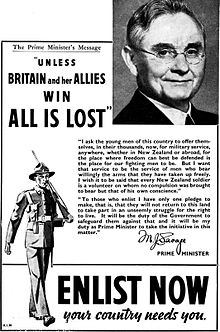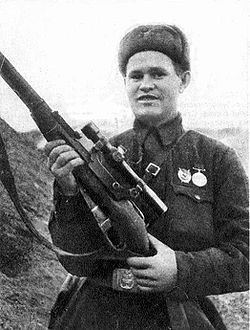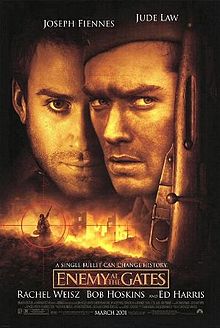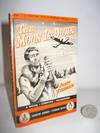New Zealand entered the Second World War by declaring war on Nazi Germany with Britain. The state of war with Germany was officially held to have existed since 9.30pm on 3 September 1939, simultaneous with that of Britain, but in fact the declaration of war was not made until confirmation had been received from Britain that their ultimatum to Germany had expired. Diplomatically, New Zealand had expressed vocal opposition to fascism in Europe and also to the appeasement of Fascist dictatorships, and national sentiment for a strong show of force met with general support. Economic and defensive considerations also motivated the New Zealand involvement — reliance on Britain meant that threats to Britain became threats to New Zealand too in terms of economic and defensive ties. There was also a strong sentimental link between the former British colony and the United Kingdom, with many seeing Britain as the "mother country" or "Home". The New Zealand Prime Minister of the time Michael Joseph Savage summed this up at the outbreak of war with a quote that would become a popular cry in New Zealand during the war:
- "It is with gratitude in the past, and with confidence in the future, that we range ourselves without fear beside Britain, where she goes, we go! Where she stands, we stand!"[1]
New Zealand provided personnel for service in the Royal Air Force and in the Royal Navy. The New Zealand government placed the New Zealand Division of the Royal Navy at the Admiralty's disposal and made available to the RAF 30 new Wellington medium bombers waiting in the United Kingdom for shipping to New Zealand. The New Zealand Army contributed the 2nd New Zealand Expeditionary Force (2NZEF). In total, around 140,000 New Zealand personnel served overseas for the Allied war effort, and an additional 100,000 men were armed for Home Guard duty. At its peak in July 1942, New Zealand had 154,549 men and women under arms (excluding the Home Guard) and by the war's end a total of 194,000 men and 10,000 women had served in the armed forces at home and overseas. A total of 11,928 New Zealanders, or 0.73% of the 1939 population, lost their lives. Among other Commonwealth nations, the death rates were: 0.93% for the United Kingdom, 0.57% for Australia, 0.40% for Canada and 0.12% for South Africa.[2] The 2nd New Zealand Expeditionary Force was formed under Major-General Bernard Freyberg and would see active service in Greece, Crete, North Africa, Italy, and Yugoslavia. The main fighting unit of the expeditionary force was the New Zealand 2nd Division, also commanded by Major-General Bernard Freyberg.
A small number of New Zealand transport and signals units supported the British Operation Compass in the Western Desert in December 1940, but only in November 1941 did the New Zealand 2nd Division became fully involved in the North African Campaign. Following the evacuation from Crete, the Division regrouped at its camp near Maadi, at the base of the desert slopes of Wadi Digla and Tel al-Maadi. Reinforcements arrived from New Zealand to bring the Division back up to strength and the training cut short by the move to Greece and Crete was completed. On 18 November 1941, Operation Crusader was launched to lift the Siege of Tobruk (the third such attack), under the command of General Alan Cunningham and the New Zealand 2nd Division (integrated into the British Eighth Army) took part in the offensive, crossing the Libyan frontier into Cyrenaica. Operation Crusader was an overall success for the British, although Erwin Rommel's Afrika Korps inflicted heavy armour and infantry losses before its weakened and under supplied units retreated to El Agheila and halted the British advance. The New Zealand troops were the ones to relieve Tobruk after fighting around Sidi Rezegh, where Axis tanks had inflicted heavy casualties against the several New Zealand infantry battalions, protected by very little of their own armour. In February, 1942, With Crusader completed, the New Zealand government insisted that the Division be withdrawn to Syria to recover - 879 men were killed and 1700 wounded in Operation Crusader, the most costly battle the Division fought in the Second World War.
On 14 June 1942 the generals recalled the New Zealanders from their occupation-duties in Syria as the Afrika Korps broke through Gazala and captured Tobruk. The New Zealanders, put on the defence, found themselves encircled at Minqar Qa'im but escaped thanks to brutally efficient hand-to-hand fighting by 4 Brigade. The British forces prevented Rommel's advance was prevented from reaching Alexandria, Cairo and the Suez Canal in the First Battle of El Alamein, where New Zealand troops captured Ruweisat Ridge in a successful night attack. However, they were unable to bring their anti-tank weapons forward, and more importantly, British armour didn't move forward to support the soldiers. Heavy casualties were suffered by the two New Zealand brigades involved as they were attacking by German tanks, and several thousand men were taken prisoner. Charles Upham earned a bar for his Victoria Cross in this battle. Under the new command of Lieutenant-General Bernard Montgomery, the Eighth Army launched a new offensive on 23 October against the stalled Axis forces, the Second Battle of El Alamein. On the first night, as part of Operation Lightfoot the New Zealand 2nd Division, with other British divisions, moved through the deep Axis minefields while engineers cleared routes for British tanks to follow. The New Zealanders successfully captured their objectives on Miteiriya Ridge. By 2 November, with the attack bogged down, Montgomery launched a new initiative to the south of the battle lines, Operation Supercharge, with the ultimate goal of disintegrating the Axis army. The experienced New Zealand 2nd Division was called to carry out the initial thrust - the same sort of attack they had made in Lightfoot. The under strength Division could not have the required impact and two British brigades assisted. The German line was breached by British armour and on 4 November the Afrika Korps, faced with the prospect of complete defeat, skillfully withdrew.
Some time early in the war, most likely late in 1941, my father arrived in North Africa. Everybody was very nervous about the prospect of being Nazi slaves if they lost, but the allies had yet to have a significant victory. Most of teh soldiers, my father included, were trained, but very green. At the risk of being called a cheat, because this sort of thing is against the rules, I wrote and made available to my father, a book called Psychology for the fighting man. It was not due to be officially published for another couple of years, but on the other hand I wasn't due to be born until 28th July 1955, and only if my father survived. In it were tips for the soldiers, such as the importance of keeping one's ears clean in order to be a better century, being aware of the effects of ablutions and what that could tell the enemy downwind, the importance of washing, again in order not to give ones'position away and so on. The boys borrowed it and read one page, committing it to memory, and than shared the contents with each other.
It also mentioned the Battle for Stalingrad, which didn't find its way into history for another year or two, from November to December 1942, but it was a major victory for the allies, partly due to the plan of keeping 10% of the Russian force to hold the city until the river froze, enabling the Russians to be resupplied, and because of teh work of the snipers, who I am proud to say I was one, but in a previous life lived a long time ago.
Enemy at the Gates is a 2001 war film directed by Jean-Jacques Annaud, starring Joseph Fiennes, Jude Law, Rachel Weisz, Bob Hoskins and Ed Harris set during the Battle of Stalingrad in World War II.
The film's title is taken from William Craig's 1973 nonfiction book Enemy at the Gates: The Battle for Stalingrad, which describes the events surrounding the Battle of Stalingrad from 1942–1943.[2] It is based on a duel mentioned in the book that developed between the legendary Soviet sniper Vasily Grigoryevich Zaitsev and his German counterpart, Major Erwin König, as they stalk each other during the battle. The movie is also partially based on the book War of the Rats.[citation needed]
Some Soviet Stalingrad veterans were sufficiently offended by the portrayal of the Red Army, that on 7 May 2001, soon after it was shown in Russia, they addressed their grievances to the State Duma, demanding the film be banned. This request was not granted.[5]
Historian Antony Beevor suggests in his book, Stalingrad, that, while Zaitsev was a real person, the story of his duel (dramatized in the film) with König is fictional. Although William Craig's book Enemy at the Gates: The Battle for Stalingrad includes a "sniper's duel" between Zaitsev and König, the sequence of events in the film is fictional. Zaitsev, in an interview claims to have engaged in a sniper duel over a number of days. Zaitsev states that after killing the German sniper, and on collecting his tags, he found that he had killed the head of the Berlin Sniper School. [6]
Vasily Grigoryevich Zaytsev (Russian: Василий Григорьевич Зайцев, IPA: [vʌˈsʲilʲɪj ɡrʲɪˈɡorʲjevʲɪtɕ ˈzajtsɨf]; March 23, 1915 – December 15, 1991) was a Soviet sniper during World War II, notable particularly for his activities between November 10 and December 17, 1942, during the Battle of Stalingrad. He killed 225 soldiers and officers of the Wehrmacht and other Axis armies, including 11 enemy snipers.[1]
Prior to November 10, he had already killed 32 Axis soldiers with the standard-issue Mosin–Nagant rifle.[1] Between October 1942 and January 1943, Zaytsev made 242 verified kills.
Puffin Books is the children's imprint of British publishers Penguin Books. Since the 1960s it has been the largest publisher of children's books in the UK and much of the English-speaking world.[1]
The Penguin Group is a trade book publisher, the largest in the world as of 2011, having overtaken Random House in 2009. The Penguin Group is the name of the incorporated division of parent Pearson PLC that oversees these publishing operations. Penguin Books has its registered office in City of Westminster, London, England.[1][2]
Its British division is Penguin Books Ltd. Its United States arm is Penguin Group (USA) Inc. The Irish division is Penguin Ireland, the New Zealand division is Penguin Group (NZ), the Indian division is Penguin Books India, the Australian division is Penguin Group (Australia). In Canada, Penguin operates as a division of Pearson Canada Inc. There are also Penguin Group (China) and Penguin Group (South Africa).
Pearson plc (LSE: PSON; NYSE: PSO) is a global media and education company headquartered in London, United Kingdom. It is both the largest education company and the largest book publisher in the world, with consumer imprints including Penguin, Dorling Kindersley and Ladybird.[3][4] It also owns the Financial Times Group, which is the publisher of the Financial Times.
Pearson has a primary listing on the London Stock Exchange and is a constituent of the FTSE 100 Index. It has a secondary listing on the New York Stock Exchange. Marjorie Scardino has been CEO since 1997.
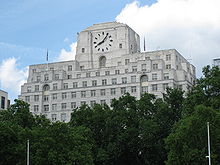
The building was for many years the London headquarters of Shell-Mex and BP Ltd for whom it was originally built. Shell-Mex and BP Ltd was a Joint Venture company created by Shell and British Petroleum in 1932 when they decided to merge their United Kingdom marketing operations.[1] Upon the brand separation of Shell-Mex and BP Ltd in 1975, Shell Mex House became the head office of Shell UK Ltd, which was Shell's UK operating company. Changes in the way that Shell was run in the 1990s led to the disposal of the property by Shell. Today, simply known as 80 Strand, most of its floors are occupied by companies belonging to Pearson PLC, who use it as their registered office, including Mergermarket, Penguin Books, Dorling Kindersley, Hamish Hamilton, Michael Joseph and Rough Guides.
Other notable businesses in this building are Groupe Aeroplan, which manages the Nectar loyalty card, and PricewaterhouseCoopers.
Alfred the Great (Old English: Ælfrēd, Ælfrǣd, "elf counsel"; 848/849 – 26 October 899) was King of Wessex from 871 to 899.
Alfred is noted for his defence of the Anglo-Saxon kingdoms of southern England against the Vikings, becoming the only English monarch still to be accorded the epithet "the Great".[1] Alfred was the first King of the West Saxons to style himself "King of the Anglo-Saxons". Details of his life are described in a work by the 10th century Welsh scholar and bishop Asser. Alfred was a learned man who encouraged education and improved his kingdom's legal system and military structure. He is regarded as a saint by some Catholics, but has never been officially canonized.[2] The Anglican Communion venerates him as a Christian hero, with a feast day of 26 October,[3] and he may often be found depicted in stained glass in Church of England parish churches.
In 1935, if you wanted to read a good book, you needed either a lot of money or a library card. Cheap paperbacks were available, but their poor production generally tended to mirror the quality between the covers.
Penguin paperbacks were the brainchild of Allen Lane, then a director of The Bodley Head. After a weekend visiting Agatha Christie in Devon, he found himself on a platform at Exeter station searching its bookstall for something to read on his journey back to London, but discovered only popular magazines and reprints of Victorian novels.
Appalled by the selection on offer, Lane decided that good quality contemporary fiction should be made available at an attractive price and sold not just in traditional bookshops, but also in railway stations, tobacconists and chain stores.
He also wanted a 'dignified but flippant' symbol for his new business. His secretary suggested a Penguin and another employee was sent to London Zoo to make some sketches. Seventy years later Penguin is still one of the most recognizable brands in the world.
The first Penguin paperbacks appeared in the summer of 1935 and included works by Ernest Hemingway, André Maurois and Agatha Christie. They were colour coded (orange for fiction, blue for biography, green for crime) and cost just sixpence, the same price as a packet of cigarettes. The way the public thought about books changed forever – the paperback revolution had begun.
Penguin became a separate company in 1936, set up premises and within twelve months, it had sold a staggering 3 million paperbacks.
In 1937, Penguin launched the Penguin Shakespeare series and the Pelican imprint – original non-fiction books on contemporary issues – and the appearance of a book-dispensing machine at Charing Cross called the Penguincubator.
As conflict in Europe drew closer, Penguin Specials such as What Hitler Wants achieved record-breaking sales. One of the bestselling titles during the war was Aircraft Recognition, used by both civilians and the fighting forces to recognize enemy planes. Penguin also started an Armed Forces Book Club, bringing entertainment and comfort to soldiers cut off from friends and family.
Two of the company's most famous names were launched in the 1940s. Puffin was born in 1940 as a series of non-fiction picture books for children. They proved to be such a great success that Puffin started publishing fiction the following year, with Worzel Gummidge among its first titles.
In 1946, Penguin Classics were launched with E. V. Rieu's translation of The Odyssey, making classic texts available to everyone. Today this world famous series consists of more than 1,200 titles (including Penguin Modern Classics), ranging from The Epic of Gilgamesh to One Flew over the Cuckoo's Nest.
The 1960s brought a revolution in popular culture and Penguin was at the forefront. The company was charged under the Obscene Publications Act in 1960 after publishing Lady Chatterley's Lover. Penguin fought back and was acquitted, marking a turning point in British censorship laws. People formed huge queues to buy the book and Penguin sold 2 million copies in six weeks.
Firmly established, as a major force Penguin became a public company in 1961.
A new imprint was set up in 1967 under the name of Allen Lane The Penguin Press – a new venture for Penguin that allowed it publish in both hardback and paperback.
Sir Allen Lane died on 7 July 1970 and tributes flooded in from the literary world. That same year, Pearson, the international media group, bought Penguin and the company continued as a major and vital publishing force.
The 1980s brought more change and expansion for Penguin – it acquired Frederick Warne, best known for its Beatrix Potter titles, in 1983, set up the Viking imprint in 1984, and bought the Michael Joseph and Hamish Hamilton book-publishing divisions in 1985.
Like every other period in the company's history, Penguin continued to publish controversial books throughout the 1980s, including Salman Rushdie's The Satanic Verses.
Penguin Audiobooks were launched in 1993, bringing a mix of classic and contemporary titles to a listening audience and using only the finest actors to record them.
In 2000, Pearson bought Dorling Kindersley, publishers of highly visual and dynamic travel, reference and children's books, and in 2002 acquired Rough Guides, the acclaimed travel and music publishers into the Penguin Group of companies.
Penguin retained its position as a champion of free speech when it successfully defended a libel suit brought by revisionist historian David Irving in 2000 after the publication of Professor Deborah Lipstadt's Denying the Holocaust. The company also published Michael Moore's controversial Stupid White Men in 2002 after attempts in the US to ban it.
Today the company has offices in fifteen countries. In the twenty-first century the Penguin Group can cater for every stage of a reader's lifetime, with books from Dorling Kindersley, Frederick Warne, Ladybird, Penguin, Puffin and Rough Guides, making Penguin the home of reading.
To celebrate its proud history, Penguin is publishing the Popular Penguins by authors ranging from Jane Austen to Simon Winchester. The Popular Penguins follow Allen Lane's ethos of making great writing affordable and available to everybody – now you can own a piece of the Penguin story.
Psychology for the Fighting Man
Infantry
xx Psychological Warfare
Death can be inflicted upon the bodies of the enemy, destruction upon property, but defeat is a conquest of the mind.
Some military men think of war mainly in terms of actual military action- advancing or retreating troops, bombing raids over enemy territory, naval battles. Yet success in most military actions depends ultimately upon psychological factors
